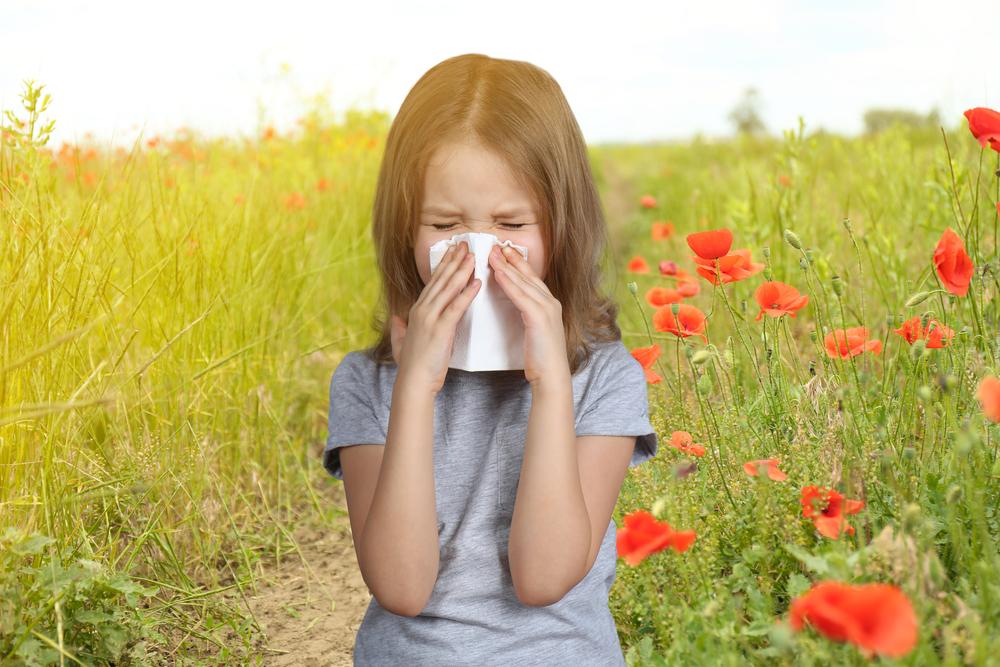Effective Child-Friendly Strategies for Managing Seasonal Allergies
This comprehensive guide explores child-friendly solutions for seasonal allergy relief, including safe medications like antihistamines, eye drops, and nasal sprays. It emphasizes early diagnosis, proper medication use, and lifestyle adjustments to enhance children's comfort during allergy seasons. Safeguarding children's health involves understanding treatment options and environmental management, ensuring effective relief with minimal side effects. Whether dealing with sneezing, itchy eyes, or nasal congestion, parents will find practical advice to manage seasonal allergies safely and effectively, supporting their child's well-being year-round.

Child-Centered Solutions for Seasonal Allergy Relief
As seasons change, many children experience uncomfortable allergy symptoms such as sneezing, nasal congestion, watery eyes, and coughing. These reactions are caused by increased exposure to outdoor allergens like pollen, mold spores, and other environmental irritants. For parents, managing these symptoms effectively and safely is a priority, especially when considering the health and well-being of their children. Recognizing the signs of allergies early and choosing appropriate treatment options can significantly improve your child's comfort and quality of life during allergy-prone seasons.
When your child exhibits symptoms such as a persistent runny nose, nasal congestion, itchy or watery eyes, or sneezing fits, consulting a pediatrician is crucial to ensure accurate diagnosis and treatment. Nonetheless, many over-the-counter (OTC) remedies are available that are safe for children and can provide effective relief from allergy symptoms, provided they are used appropriately and under parental guidance. It’s essential to select products tailored to your child's age, size, and specific symptoms to maximize safety and efficacy.
Understanding Common Allergy Medications for Children
There are various classes of allergy medications suitable for children, each targeting different symptoms. The most frequently used are oral antihistamines, eye drops, and nasal sprays. Knowing how these work and which options are safest can help parents make informed decisions for managing their child's seasonal allergies.
Oral Antihistamines: Fast-Acting Relief for Allergy Symptoms
Oral antihistamines are among the most widely used medications for allergy relief; they work by blocking histamine, a chemical responsible for allergy responses such as itching, sneezing, and runny nose. These medications offer quick relief for many allergy symptoms, but they are less effective at relieving nasal congestion or chest tightness, which may require additional or alternative treatments.
Popular and well-established options for children include:
Zyrtec (Cetirizine): An effective antihistamine known for rapid action, Zyrtec is approved for children over 6 months old. It relieves sneezing and runny nose effectively but can sometimes cause drowsiness. Parents should monitor their child's response and consult with a pediatrician before use, especially in younger children or those with other health conditions.
Claritin (Loratadine): Known for its non-drowsy profile, Claritin begins working within approximately three hours of administration. It provides reliable allergy relief and is suitable for children aged 2 and older, making it a popular choice for daily allergy management.
Allegra (Fexofenadine): Suitable for children over 12 years old, Allegra offers effective relief from allergy symptoms without causing drowsiness. Its longer duration of action allows for once or twice daily dosing, making it convenient for regular use.
Benadryl (Diphenhydramine): This medication is frequently used for acute allergy episodes in children, including reactions like hives and swelling. It can be administered every 4-6 hours but often causes sedation. As such, it should be used cautiously and under medical supervision, especially in younger children.
Eye Drops: Targeted Relief for Watery, Itchy Eyes
Allergic conjunctivitis, characterized by watery, redness, and itchy eyes, is a common seasonal allergy symptom in children. Eye drops can provide targeted relief and are a helpful adjunct to oral medications. Parents should choose eye drops formulated specifically for allergic symptoms and ensure proper application techniques to avoid contamination or overuse.
Effective options include:
Visine-A / Opcon-A: These over-the-counter eye drops are budget-friendly and quickly reduce redness and swelling. They can be applied every four hours as needed but should not be used continuously for extended periods without medical advice.
Zatidor (Olopatadine): Contains both antihistamine and mast cell stabilizer components, offering dual-action relief. Typically used twice daily, it effectively diminishes allergic reactions over time and can reduce the need for systemic medications.
Nasal Sprays: Reducing Congestion and Inflammation
Nasal sprays are an essential part of allergy management for persistent nasal congestion and inflammation. Many OTC nasal sprays contain mild corticosteroids or mast cell stabilizers, which work to reduce swelling, congestion, and allergic inflammation directly at the site of contact. Using nasal sprays correctly and for the recommended duration can significantly improve comfort and prevent symptom escalation.
Notable options for children include:
Flonase (Fluticasone Propionate): Approved for children over two years old, Flonase is scent-free and alcohol-free, making it suitable for sensitive skin. It helps reduce nasal swelling and also alleviates eye allergy symptoms. Consistent use over several days yields the best results, and it can be part of a long-term allergy management plan under pediatric guidance.
Nasacort OTC (Triamcinolone): Similar to Flonase, Nasacort is safe for children above 2 years. It provides broad relief from allergy symptoms, including nasal congestion and sneezing, with minimal side effects when used properly.
Rhinocort (Budesonide): Another steroid nasal spray, Rhinocort effectively reduces inflammation, offering quick relief for persistent symptoms in children.
NasalCrom (Cromolyn Sodium): A non-steroidal mast cell stabilizer, suitable for parents seeking steroid-free options. It requires consistent administration of four doses daily and works gradually to prevent allergic reactions. It is especially useful for long-term allergy prevention in sensitive children.
Always consult a healthcare professional before starting any medication regimen for children, especially for repeated or long-term use. Proper diagnosis and tailored treatment strategies are essential for safe and effective allergy management.
Additional Tips for Managing Seasonal Allergies in Children
Aside from medication, implementing certain lifestyle and environmental changes can significantly alleviate seasonal allergy symptoms in children. These include keeping windows closed during high pollen seasons, using air purifiers with HEPA filters, and encouraging indoor activities during peak allergen periods. Regularly washing bedding, curtains, and plush toys can reduce the accumulation of dust and allergens. Maintaining good hydration and a balanced diet rich in immune-boosting foods also support overall health.
Monitoring pollen forecasts and avoiding outdoor activities during high pollen count days can prevent symptom exacerbation. Encourage children to wear sunglasses or hats when outside to protect their eyes and face. If symptoms persist or worsen despite these measures, seek medical advice for further evaluation and personalized treatment plans.
Thank you for trusting us with your child's health. With the right strategies and medications carefully selected, managing seasonal allergies can become more straightforward and less stressful for both parents and children.




